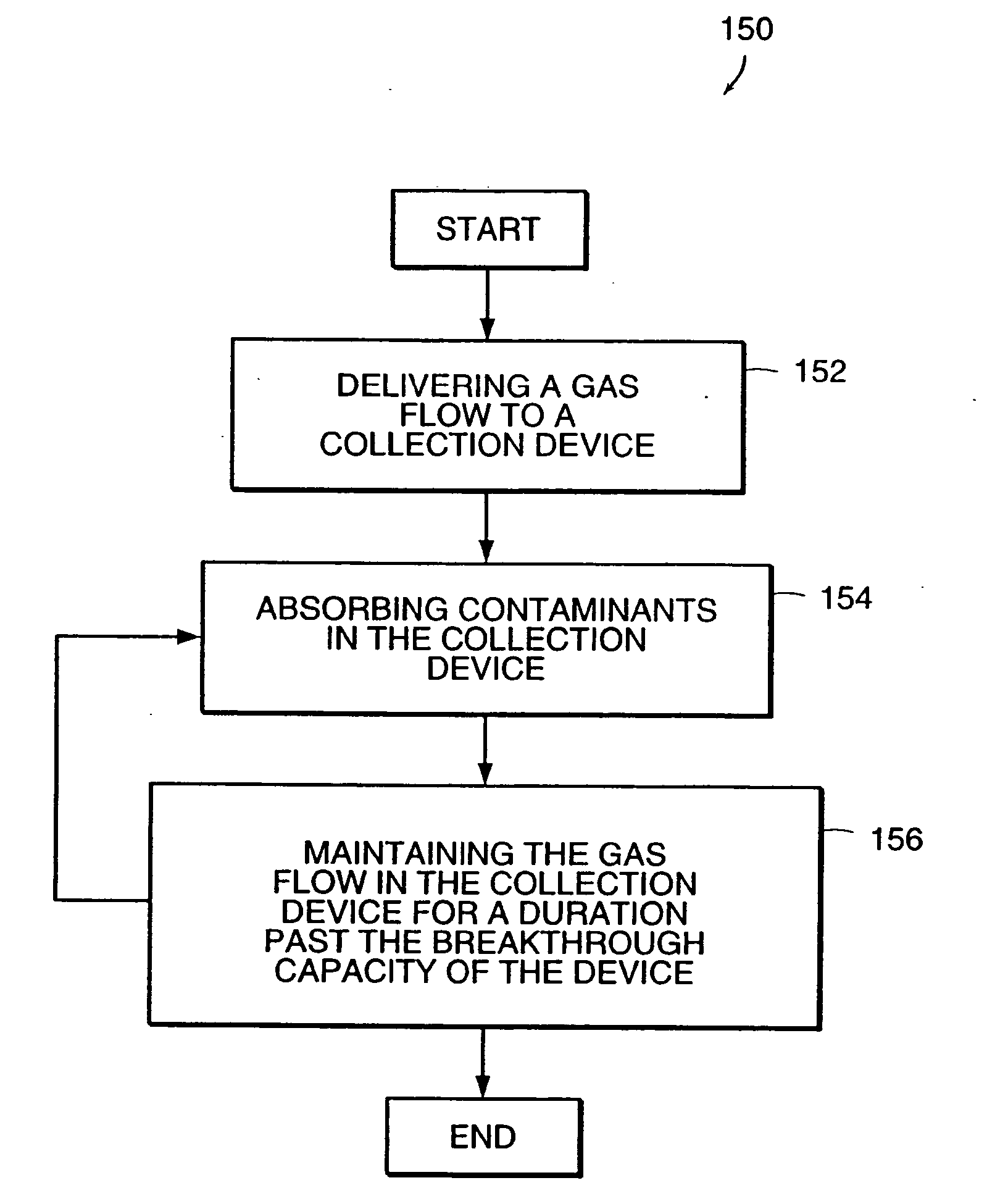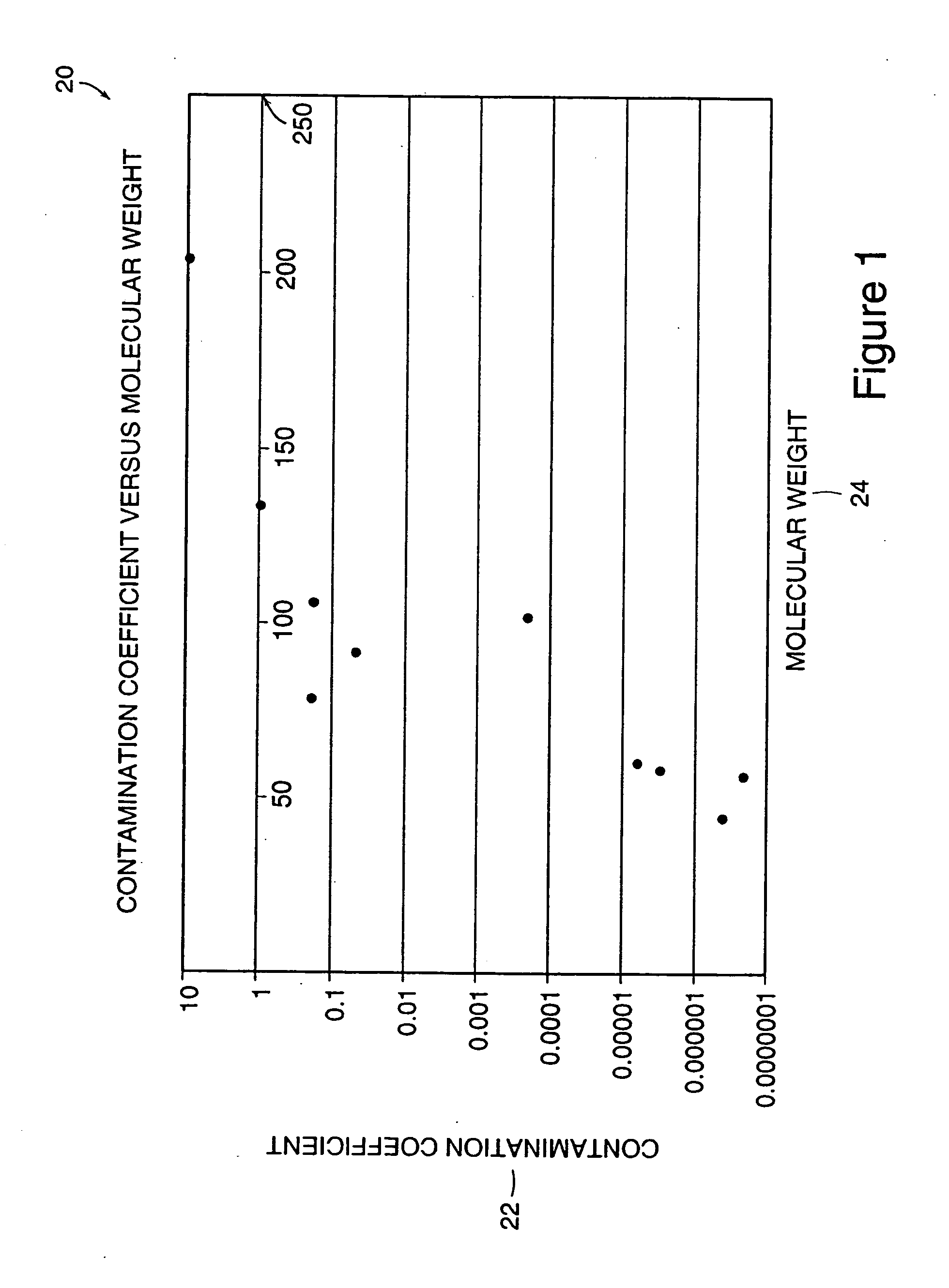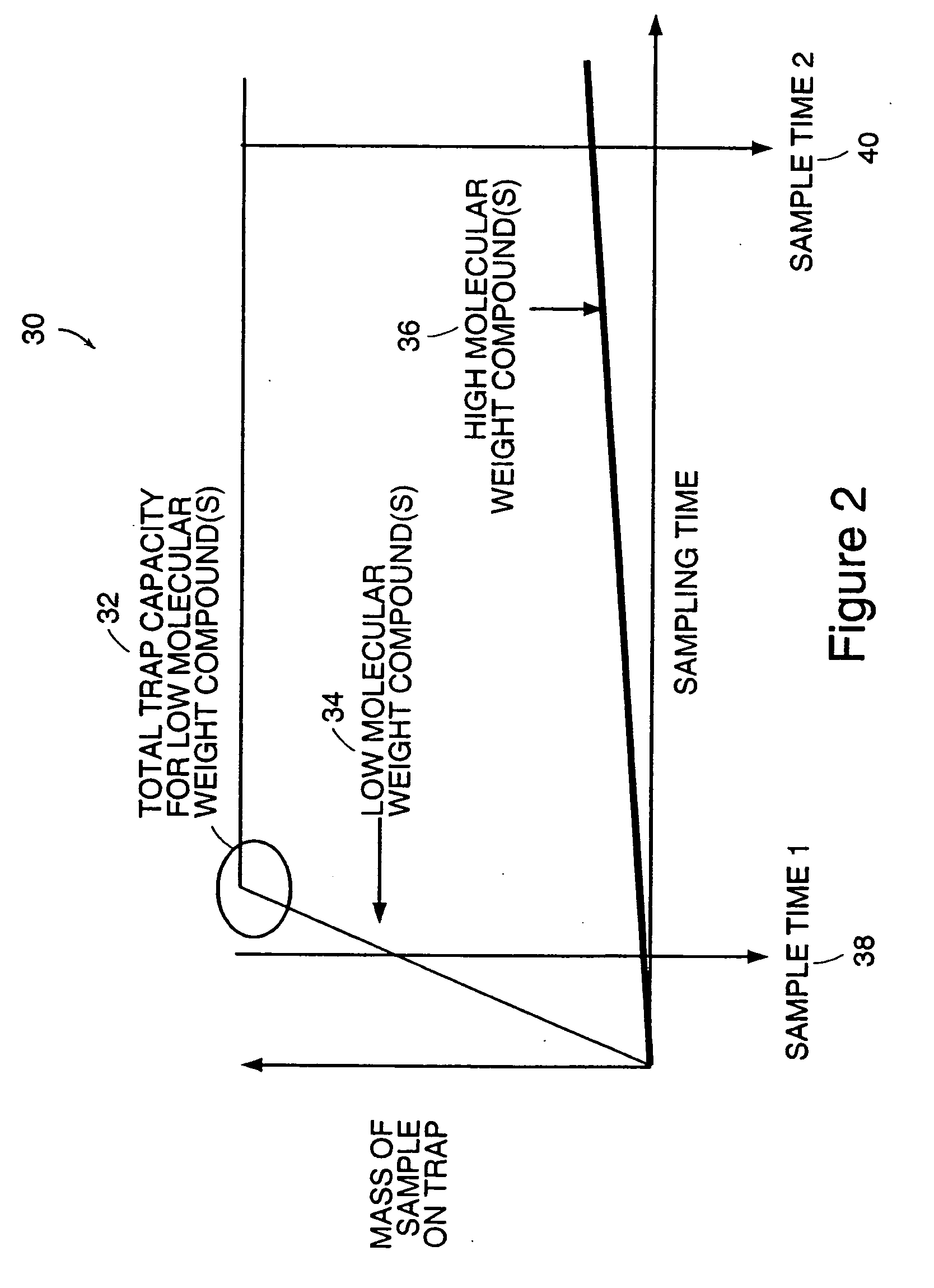System and method of monitoring contamination
a technology of contamination monitoring and monitoring method, applied in the direction of semiconductor/solid-state device testing/measurement, separation process, instruments, etc., can solve the problems of reducing the transmission of light, reducing the capacity of absorbing light, and adhering to optical elements, etc., to achieve high boiling point and high absorbency.
- Summary
- Abstract
- Description
- Claims
- Application Information
AI Technical Summary
Benefits of technology
Problems solved by technology
Method used
Image
Examples
Embodiment Construction
[0053] The present invention is directed to a system and method for determining and controlling contamination. Preferred embodiments of the present invention address gaseous contamination as well as the contaminants adsorbed on surfaces, for example, an optical surface. The latter is more critical to the performance of the optical elements.
[0054] Table 1 illustrates various species in a cleanroom environment, such as, for example, a fabrication environment using photolithography systems. The low molecular weight species, such as acetone, isopropyl alcohol and low molecular weight siloxanes are the most prevalent in manufacturing environments. Compounds that are most likely to reduce the performance of optics are compounds having a high contamination coefficient or a high molecular weight examples can include, but are not limited to, methoxytrimethyl silane, trimethyl silane and trimethyl silanol. These compounds appear in italics in Table 1 have a higher molecular weight, higher co...
PUM
| Property | Measurement | Unit |
|---|---|---|
| volumes | aaaaa | aaaaa |
| volumes | aaaaa | aaaaa |
| wavelength | aaaaa | aaaaa |
Abstract
Description
Claims
Application Information
 Login to View More
Login to View More - R&D
- Intellectual Property
- Life Sciences
- Materials
- Tech Scout
- Unparalleled Data Quality
- Higher Quality Content
- 60% Fewer Hallucinations
Browse by: Latest US Patents, China's latest patents, Technical Efficacy Thesaurus, Application Domain, Technology Topic, Popular Technical Reports.
© 2025 PatSnap. All rights reserved.Legal|Privacy policy|Modern Slavery Act Transparency Statement|Sitemap|About US| Contact US: help@patsnap.com



